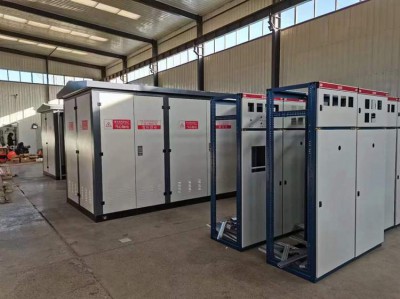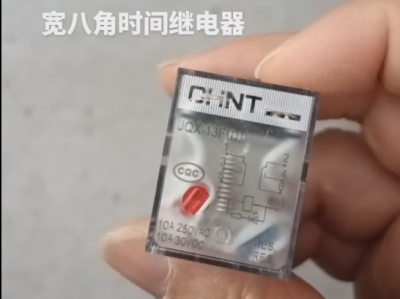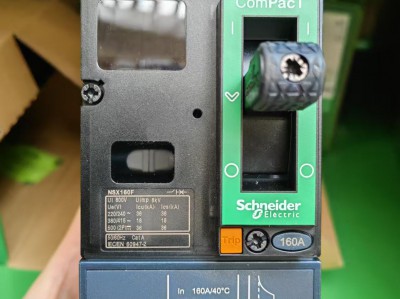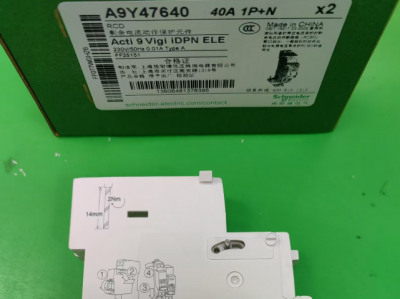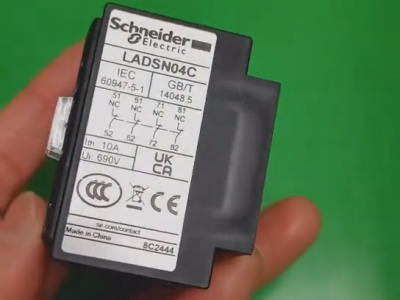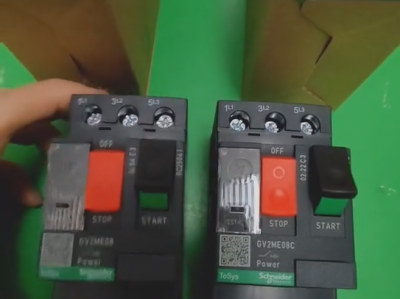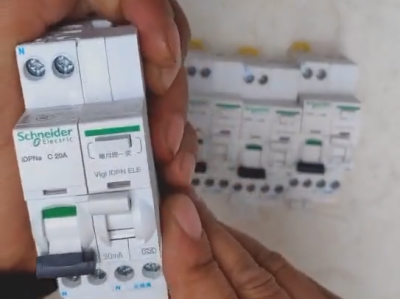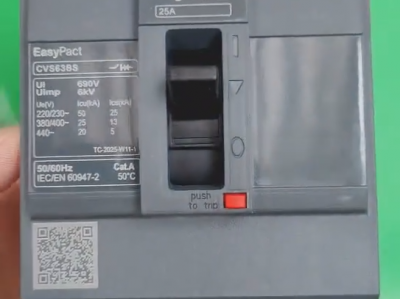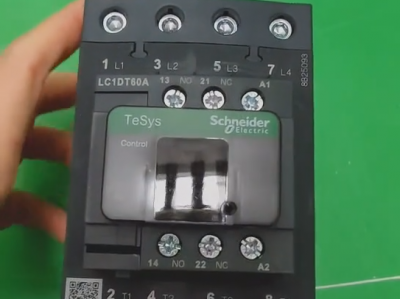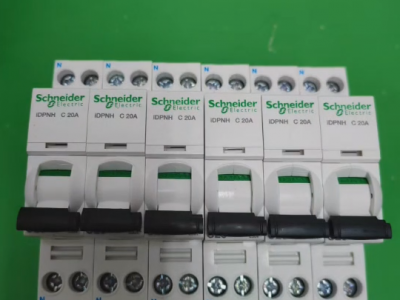Chint AC modular socket
Product description
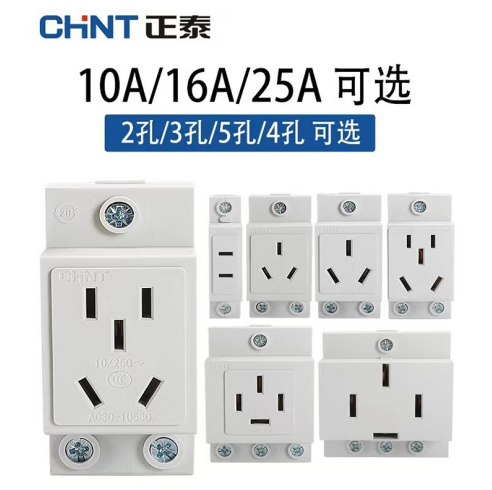
The Chint AC modular socket is a kind of rail-mounted power socket with modular design, mainly used in circuits with an alternating current of 50/60Hz and a rated voltage of 250V/400V. It is suitable for scenarios such as households, offices, industrial distribution boxes, and machine tool equipment. The following is a detailed analysis from aspects including product features, technical parameters, application scenarios, installation and maintenance, safety certifications, price and purchasing channels, user reviews, etc.:
Core Product FeaturesSchneider LRD Thermal Relay Price
1. **Modular Design**
It supports the free combination of different functional modules, such as two-hole, three-hole, five-hole sockets, as well as three-phase four-wire sockets (such as AC30-448), and can be flexibly configured according to requirements. For example, in a household distribution box, a five-hole socket and a leakage protection module can be combined, and in an industrial scenario, a three-phase socket can be matched to meet the needs of high-power equipment.
2. **Rail-mounted Installation*Schneider Circuit Breakers price**
It adopts 35mm DIN rail installation, supports hot-swapping, and is easy to install without the need for complex tools. For example, users can directly snap the socket module into the distribution box rail to quickly complete the wiring.
3. **High Compatibility*CHINT surge protector price*
It is compatible with Chint DZ47 series circuit breakers and lighting distribution boxes, and can be used in combination with other low-voltage electrical appliances (such as contactors and relays) to form a complete power distribution system.
II. Technical Parameters and Model Analysis
| Model | Rated Current | Number of Poles/Holes | Voltage | Application Scenarios |
| AC30-10530 | 10A | Five holes | 250V | Single-phase power consumption in households and offices |
| AC30-110 | 16A | Three poles | 250V | High-power equipment such as air conditioners and water heaters |
| AC30-448 | 16A | Four poles | 400V | Industrial three-phase equipment |
| AC30-451 | 25A | Four poles | 400V | High-load three-phase equipment |
- **Protection Level**: Some models (such as AC30-10530) reach the IP44 protection level, which is dustproof and splash-proof, and is suitable for humid environments (such as kitchens and bathrooms).CHINT circuit breaker price
- **Material**: It is made of PC flame-retardant material, which can withstand high temperatures (above 100℃) and has strong impact resistance.
III. Application Scenariosmolded case circuit breaker Price
1. **Household Power Distribution**
- Combine a five-hole socket and a leakage protection module for use in areas such as kitchens and bedrooms.
- Example: Install the AC30-10530 five-hole socket in the distribution box and match it with the DZ47-63 circuit breaker to achieve safe power distribution.
2. **Industrial Automation**
- Three-phase four-wire sockets (such as AC30-448) provide power sources for machine tools and production lines.
- Example: Install multiple AC30-448 modules in the factory distribution box to distribute three-phase power to different devices.
3. **Data Centers and Communications**
- High-density socket modules meet the power supply requirements of servers and switches.
IV. Installation and Maintenance
1. **Installation Steps**
- **Clean the Bottom Box**: Remove dust and debris inside the distribution box.
- **Fix the Rail**: Install the 35mm DIN rail inside the distribution box.
- **Snap in the Module**: Snap the socket module into the rail and tighten the screws.
- **Connect the Wires**: Connect the live wire, neutral wire, and ground wire according to the markings, ensuring a firm connection.
2. **Maintenance Suggestions**
- **Regular Inspection**: Check whether the socket wiring is loose and whether the module is overheated every quarter.
- **Cleaning and Maintenance**: Wipe the surface with a dry cloth and avoid using chemical cleaners.
- **Troubleshooting**: If there is poor contact or a short circuit, replace the module in a timely manner or contact the after-sales service.
V. Safety Certifications and Performance
1. **Certification Standards**
- Domestic: Passed the 3C certification (such as 2020980307001645), in line with the GB 1002-2008 standard.
- International: Some models (such as AC30-10530) have passed the UL certification and are suitable for the North American market.
2. **Safety Design**
- **Anti-electric Shock Protection**: The socket holes are equipped with safety doors to prevent children from accidentally touching them.
- **Overload Protection**: It needs to be used in combination with a circuit breaker (such as the DZ47 series). When the current exceeds the rated value, it will trip automatically.
VI. Price and Purchasing Channels
| Model | Price Range (2025) | Purchasing Channels |
| AC30-10530 | WA:0086-13811255435yuan | china Electric |
| AC30-110 | WA:0086-13811255435yuan | china Electric |
| AC30-448 | WA:0086-13811255435 yuan | china Electric |
- **Promotional Activities**: go to www.transformerandswitchgear.com
- **Bulk Purchasing**: More favorable prices can be obtained through Alibaba or Chint's official channels.
VII. User Reviews and Comparisons
1. **User Feedback**
- **Advantages**: Easy to install, strong stability, high cost performance. For example, users have reported that the AC30-10530 has no problem of poor contact during household use.
- **Disadvantages**: The wiring markings of some models (such as three-phase sockets) are not clear enough and the instruction manual needs to be referred to.
2. **Comparison with International Brands**
- **Siemens and Schneider**: They have better quality, but the price is 30%-50% higher, which is suitable for high-end projects.
- **Chint**: It has outstanding cost performance and is suitable for domestic small and medium-sized projects and household users.
VIII. After-sales Service
- **Warranty Period**: 1 year (non-human damage).
- **Customer Service Support**: Whatsapp: 0086-13811255435, Online Consultation (Chint's official website).
- **Spare Parts Supply**: Replacement modules and rails are provided and can be purchased through the official website or dealers.
IX. Precautions
1. **Model Selection Suggestions**
- Select the model according to the load current: 10A is suitable for ordinary electrical appliances, 16A is suitable for air conditioners, and 25A is suitable for industrial equipment.
- For three-phase equipment, a four-pole socket (such as AC30-448) needs to be selected.
2. **Installation Specifications**
- Ensure that the live wire, neutral wire, and ground wire are correctly connected when wiring to avoid short circuits.
- The distribution box needs to be grounded to ensure personal safety.
3. **Adaptation to the International Market**
- When exporting to the United States, select the model with UL certification (such as AC30-10530) and confirm the voltage matching (120V needs to be customized).
Conclusion
The Chint AC modular socket, with its modular design, high compatibility, and cost-performance advantages, has become an ideal choice for household and industrial power distribution. Its flexible configuration, safety performance, and convenient installation are especially suitable for scenarios that require frequent expansion or renovation. For users in the United States, it is recommended to select the model with UL certification and pay attention to voltage adaptation. If you need to know more about specific models or make bulk purchases, you can obtain support through Chint's official website or authorized dealers.
How to Install the Chint AC Modular Socket?
The following are the detailed installation steps of the Chint AC modular socket. Combining the characteristics of modular design and rail-mounted installation, the operation methods and precautions are described step by step:
I. Preparation before Installation
1. Tools and Materials
- **Tools**: Screwdriver (crosshead/slothead), wire stripper, voltage tester, tape measure, long-nose pliers
- **Materials**: 35mm DIN rail (the length is determined according to the number of modules), rail fixing screws, wires (select the cross-sectional area according to the load, such as 1.5mm² for 10A and 2.5mm² for 16A), terminal blocks (optional)
- **Safety Equipment**: Insulated gloves, electrical tape (spare)
2. Power-off Operation
- **Be sure to turn off the main power supply**: Disconnect the upper-level circuit breaker of the distribution box, and use a voltage tester to confirm that there is no voltage before operating to avoid the risk of electric shock.
3. Model Selection Confirmation
- Check the model of the socket module (such as the AC30-10530 five-hole, AC30-448 three-phase four-pole) against the load requirements (current, voltage, number of holes), and ensure that the module is compatible with the rail (the common 35mm DIN rail).
II. Detailed Installation Steps
1. Clean the Installation Location
- **Applicable Scenarios**: Household distribution boxes, industrial control boxes, or equipment cabinets.
- **Operation**: Remove dust and debris from the installation surface to ensure that the rail installation surface is flat and stable. If installing in a distribution box, check whether the reserved space in the box is sufficient to accommodate the module combination.
2. Fix the DIN Rail
- **Rail Specification**: Use a standard 35mm DIN rail (Chint's supporting rail or a universal type). Cut the length according to the number of modules to be installed (the width of the module is usually 18mm per position, for example, a five-hole socket occupies 2 positions, about 36mm).
- **Fixing Method**:
1. Attach the rail to the installation surface and use a tape measure to mark the positions of the screw holes (usually fix the rail at both ends and every 200mm in the middle).
2. Drill holes with an electric drill, insert expansion screws (for wall installation) or directly fix them on the metal box with self-tapping screws to ensure that the rail is horizontal and firmly fixed without shaking.
3. Snap in the Socket Module
- **Module Installation**:
1. Take out the socket module and observe the bottom snap structure (the rail installation snap is usually located on both sides or at the bottom of the module).
2. Align the top of the module with the rail and press the module down until you hear a "click" sound. Confirm that the snap is fully snapped into the rail slot (you can gently shake the module left and right to check if it is loose).
- **Hot-swapping Feature**: It supports replacing the module while it is energized (make sure the module is powered off), but it is recommended to operate with the power off for greater safety.
4. Wiring Operation
- **Preparation before Wiring**:
- Strip the insulation layer of the wire by about 10-15mm, ensure that there are no burrs on the wire ends, and the wire ends can be bent into a U shape or use cold-pressed terminal blocks.
- Distinguish the wire colors: live wire (L, usually red/brown), neutral wire (N, blue), ground wire (PE, yellow-green two-color).
- **Wiring Steps**:
1. **Single-phase Module (such as the five-hole socket AC30-10530)**:
- Open the module wiring cover (for some modules, you need to loosen the screws with a screwdriver).
- Connect the live wire to the "L" terminal, the neutral wire to the "N" terminal, and the ground wire to the "PE" or grounding mark terminal, and tighten the screws (ensure that the wire is not loose, and conduct a pull test: gently pull the wire without it falling off).
2. **Three-phase Module (such as the AC30-448 four-pole socket)**:
- Connect the three-phase live wires (L1/L2/L3, colors yellow/green/red), the neutral wire (N, blue), and the ground wire (PE, yellow-green two-color), and tighten the screws corresponding to the terminal markings.
- **Note**: When wiring, avoid the exposed part of the wire being too long to prevent short circuits; multi-strand wires need to be fixed with terminal blocks, and it is prohibited to insert them directly into the terminal holes.
5. Close the Module and Test**
- **Reset the Wiring Cover**: Ensure that the wiring cover is tightly closed to prevent dust from entering.
- **Power-on Test**:
1. Restore the main power supply and use a voltage tester to check whether the socket holes are normally charged (the live wire hole is on, the neutral wire hole is off, and there is no voltage in the ground wire hole).
2. Insert an electrical appliance for testing, such as a mobile phone charger or a low-power electrical appliance, and confirm that the power supply is normal and there are no abnormal heating or tripping phenomena.
III. Installation Precautions**
1. **Safety Specifications**
- The ground wire must be reliably connected, and the distribution box shell needs to be grounded, in line with electrical safety standards such as GB 7251.
- It is prohibited to exceed the rated current of the module (such as connecting a load above 2000W to a 10A module), and it is necessary to match it with the corresponding circuit breaker (such as a C16 circuit breaker for a 16A module).
2. **Combination Installation Skills**
- Module Arrangement: Divide it into functional areas (such as common sockets and high-power sockets), and reserve 1-2 empty positions for future expansion.
- Label Management: Paste labels next to the modules (such as "Kitchen Socket" and "Air Conditioner Dedicated") for convenient later maintenance.
3. **Adaptation to Special Scenarios**
- **Humid Environment (such as the bathroom)**: Select a module with an IP44 protection level (such as AC30-10530) and use it in combination with a waterproof distribution box.
- **Industrial Scenario**: The three-phase module needs to fix the wire tray to avoid poor contact caused by the shaking of the cable.
IV. Common Problem Handling**
- **The Module is Not Snapped in Tightly**: Check whether the rail is deformed or whether there is foreign matter in the module snap, and reinstall it after cleaning.
- **The Wiring is Loose and Trips**: After powering off, retighten the terminal screws, and replace the wire or module if necessary.
- **The Three-phase Module has a Phase Loss**: Use a multimeter to detect whether the three-phase voltage is balanced and confirm whether the live wire connection is firm.
Through the above steps, the installation of the Chint AC modular socket can be efficiently completed. Its rail-mounted design simplifies the wiring process, especially suitable for power distribution scenarios that require flexible combination. When installing, be sure to follow the safety specifications, give priority to power-off operation, and ensure that the wiring is correct before powering on for testing.

